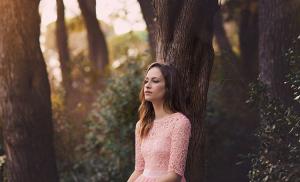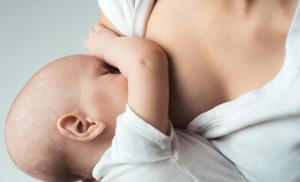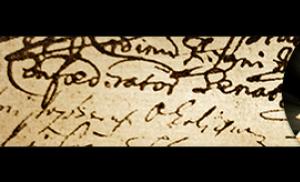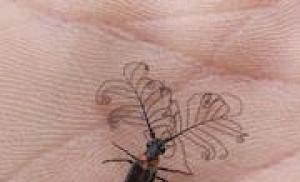Celebration of Easter at the court of Russian emperors in the 18th - late 19th centuries. Easter in tsarist russia
Easter is a delightful holiday rich in tradition. It is celebrated solemnly and joyfully by both believers and non-believers in Russia.
The folk festival always falls at the beginning of spring. The exact date of this celebration is set according to the lunar calendar.
The week preceding the celebration is called the Bright Easter week or Passionate, in which every day, starting from Monday, is Bright. The Russian people are preparing in advance for the celebration, enduring many days of Great Lent, decorating houses and courtyards, bringing perfect purity everywhere and in everything.
But most actively they begin to prepare for the Resurrection of Christ from Clean (Bright) Thursday. Believers were supposed to get up at dawn in order to be sure to redeem themselves and thus be cleansed of all sorts of sins that had been accumulated for the whole year. And only after that visit the church, where it was necessary to confess and receive communion. After the service, they quickly walked home to put in the finishing touches in an exemplary manner, before painting eggs and baking cakes.
In the evening on a bright Saturday, literally all Christians, smartly dressed, with Easter cakes, Easter cakes, and krashankas, went to the churches for the solemn Vigil. Before midnight, bell chimes were heard, announcing the approach of the moment of the Resurrection of Jesus Christ. To the incessant chimes of bells, a procession of the cross began around the cathedrals.
Russian traditions for Easter
Over the 11 centuries of its existence, Russian Easter has acquired its originality and flavor. After all, it is the festive Easter table that significantly distinguishes it from other Orthodox holidays. The holiday is characterized by special symbols - a cake and an egg. Throughout Russia, starting from Clean Thursday, Easter cakes are baked, cottage cheese Easter is prepared, eggs are painted in various ways. According to an ancient custom, they tried to prepare a plentiful garnished menu, but even in poor families, the number of Easter dishes always included a cake, freshly baked according to a special recipe, and painted eggs.
It takes a lot of free time to cook them every time. The dough for Easter cakes or Easter was kneaded for a long time, armed with patience. We used the best of the best food. Then the eggs were decorated and painted. Artistically decorated eggs have always been an impressive pride of the family. Other dishes that were prepared for the Easter table were also unique. Most of them were mostly not prepared during the calendar year. Mainly they gave preference to meat dishes and baked products: Easter cakes, Easter, rolls, roasting young pigs, hams, fried veal.
Easter has always been a particularly solemn and family holiday, it was celebrated mainly in the circle of relatives. It was supposed to visit and distant family members. Absolutely all lamps and light sources were lit in the dwellings, and in the temples of God, during the entire liturgy, absolutely all lamps and candles burned.
Going on a visit, they took colored eggs with them without fail. They greeted each other with the phrases "Christ is risen" - "Truly is risen", they kissed three times and exchanged krashankas. The presented custom is rightfully considered a characteristic feature of only Slavic peoples, in the rest of the world this tradition is absent.
Another Easter, but predominantly religious custom is the blessing of artos (prosphora). Prosphora is a yeast-free bread with a cross symbolizing the Resurrection of Christ. Another Easter, but predominantly religious custom is the blessing of artos (prosphora). Prosphora is a yeast-free bread with a cross symbolizing the Resurrection of Christ. The solemn liturgy lasted all night. After its completion, all those in the church consulted, congratulated each other, proclaiming: “Christ is risen! "-" Truly resurrected! “, Kissed three times and exchanged krashanki. The ministers of the temples proceeded to consecrate the eggs, Easter cakes and pasta brought by the parishioners.
In addition, during the Easter period, a generous tradition was established: to distribute to the poor their money, holy eggs and small pies, so that the mendicants also had the opportunity to enjoy the radiant celebration of the Resurrection of Christ.
Fun and games for Easter
After many days of fasting, as well as refusal of various joys and amusements, the Easter holiday was desired and absolutely adored by everyone. In this regard, many nationwide fun and ways of entertainment were invented, which are now loved not only by children, but also by adults. Most of these games are still popular today. In particular, the ritual of beating boiled dyed eggs: someone is holding an Easter egg in the palm of the hand with its nose up, on the other hand, the second is beating it with the nose of the next egg. Whoever has a pysanka that has remained intact continues to compete with others.
One of the fun things to do is rolling eggs. It should be played on a table or on the surface of the floor, the main condition is that there is a flat plane. Additionally, a gutter is required, which is placed directly at an angle, as well as a blanket. Anyone playing on the tray would launch an egg, which would roll onto the blanket. Provided that the descending egg collided with the egg resting on the blanket, then this was a victory. The players took the broken eggs for themselves. It was necessary to have the skill to direct the movement of the egg. The more people playing, the more fun and interesting the show became.
And the "game of heaps" was attributed to the type of entertainment only for girls. They poured more than two heaps of sand on each player. The young ladies, completely not participating in the competition, placed a decorated egg directly under a single pile of sand. The playing participants came up and pointed at one of the piles. The girl who found the hidden egg won the victory.
Signs for Easter

Christian Russian Easter, in fact, grouped around itself numerous ethnic signs, legends and rituals that are not at all recognized by the ministers of the church, but are deservedly popular in the peasant environment.
- So on Easter, the girls, under no circumstances, did not take salt with their hands, so that their hands would not sweat.
- It was supposed to wash only with water from a red egg, in order to be always blooming.
- We tried to stand on the ax to be strong. It was rumored that this miraculously helps, and the girls were so strong that, as the proverb says, "hit her at least on the road, but she doesn't care."
- - Babies born in the Easter period will always have excellent health and will be lucky in everything.
- - Drinking water drawn from a well on Easter night was listed as magical. If you sprinkle it on a living space, then it is possible to remove unkind slander, bad thoughts and sins.
- - In Easter time, you should not revel in great, and also rage.
- - It was equally believed that if, on the very first day of the Resurrection of Christ, one rolled the first bird's egg that had been laid on that day around the perimeter of the courtyard, then all unclean spirits could be driven out.
- - And if a young lady intends to quickly get married, then during the divine service she needs to say: “The Resurrection of Christ! Send for me personally the betrothed bachelor! ".
- - Accidentally hit your elbow - your beloved began to remember about your person.
- - It combed my mouth - to the inevitable kisses.
- - The brows were combed - to bow to the desired friend.
- If an insect got into the cabbage soup, then the girls expected a quick date.
Even on Easter, absolutely all love signs come true:
Isolated from all these superstitions is the monolithic category of Easter signs, which are now called economic. So, for example, the Russian population was unshakably convinced that the Easter food, consecrated by prayer in the temple, has supernatural value and has the power to assist them in dangerous and important moments of life. In this regard, absolutely all the remains, especially bones, from the Easter table were carefully preserved: some of them were buried in the soil on pastures in order to protect crops from hail, and some were kept in dwellings and thrown into the flames during a summer thunderstorm. to deflect the lightning. In the same way, the head of a holy cake was kept everywhere, so that the householder, leaving to sow arable land, had the opportunity to take it with him and eat it in his own field, which, in fact, ensured the excellent size of the harvest to come.
Natalya Alekseevna Vasilyeva Anatoly Efimovich Buslov tells how Easter was celebrated in his childhood.
Memories of Anatoly Buslov
You know, more than sixty years ago, the holidays were more convex and meaningful days, at least for the kids, than they are now (1947 ... ..JV). Any current holiday is not much different from the usual Sunday. At the same time, Easter, for example, was, as they said, a holiday of holidays, a celebration of celebrations.Spring dramatically changed our way of life. A calf was expelled from the hut, chickens were expelled from under the stove. The hut was aired and preparations for Easter began.
The female part took up the scrapers. All the dirt and soot accumulated over the winter were scraped out with fierceness, with boiling water. There was a general beating of cockroaches, Prusaks, bedbugs, crickets and all kinds of other evil spirits.
Everything was scraped, washed, washed. God forbid that there is something dirty lying around at Easter. Cooking began in the middle of the last week. Mother was a big hospitable person, she loved to celebrate the holiday properly, so all means were realized. True, there were apparently not many of them and was not required. That the ham was his own, the pig too, the fish was fried and aspic, his own chicken, and sometimes a goose. Well, eggs, sausage, cottage cheese, sour cream were not bought either. Butter, lard - their own. Here is white flour, raisins, various spices, except for horseradish, which we had overgrown with vegetable gardens, it was necessary to buy. Vodka and wine had to be bought, sugar too. Be that as it may, if there was no money, then a lot of work was required. It was necessary to start accumulating eggs, cottage cheese, butter, sour cream, etc. long ago. It was necessary to boil, and fry, and season, like with good people. But on the other hand, our table for Easter presented a wonderful picture.
Well, can I, who now receive about one and a half thousand rubles a month, serve such a table? Not at all. First, the whitest, patterned tablecloth covered the unusually large table. And it was big because they still nailed to the board from one and the other side. Then, along the bottom of the tablecloth, along the edge of the table, between all the dishes curled a wolfberry. I don't know what this early creeping green plant is really called, but it adorned the table very much. On the table in the center, of course, is cake. The cake is tall, tanned, with a yellow crumb, with raisins - beautiful, tasty! Immediately there is cheese Easter - sweet with raisins and a pile of colored eggs on a large platter. There are two bottles of vodka and the same amount of wine. If my grandchildren are going to read this scripture, then think that this is a rich man's table. No, this is the festive table of a hardworking and intelligent peasant mistress with a very small allotment of land. Nekrasov spoke and wrote very well about such workers.
Further flaunted: a ruddy pig stuffed with buckwheat porridge, chicken, duck, and sometimes a goose, importantly, glistening with fat, took their place. Jellied stuffed pike, full-length in a wooden trough, was melting in the jelly, slices of fried bream were pleasantly beckoning, homemade sausage, cut into large pieces, meat jellied meat and there something else.
It must be borne in mind that the mother had three daughters, girls (two came for Easter). And she knew how to receive visitors so that they did not cross the line of restraint and decency of behavior.
Of course, we had a lot of relatives, both on the part of our father and on the part of our mother. Therefore, there was no end to the visitors. My mother had more than fifteen godchildren alone.
Easter day began at three or four o'clock in the morning, when one of the elders went to keep Easter holy. Children were often attached to these elders. About an hour later, they returned with sacred food, and the whole family sat down at the table to break the fast. During this meal one could fearlessly ask for anything and everything was given unconditionally. Of course, the adults did not particularly lean on the dishes on display. Here all sorts of leftovers appeared that did not fall on the table: jellied meat, ham trimmings, fried fish. Well, they ate everything on a dyed egg, also a piece of kulich and Easter, as consecrated gifts. In any case, everyone was full and nourishing to the bone. After that, the table was removed.
All the bones, shells from eggs, crumbs were buried by the father in the garden, and the mother took us out into the yard to watch the sun “rejoice”.
I subsequently observed this interesting phenomenon many times, but, as if it were yesterday, I remember how we admired the sun through the fence, coming off the edge of the earth. Its colors were constantly changing: red, violet orange, blue, yellow and, especially beautiful, green color, continually appeared and disappeared, changing in this enchanting and magical game. The sun was really jubilant, and people could not help but be jubilant at such a fascinating sight. "Christ has risen from the dead!" ... Yes, it was risen under the jubilant sun, mother-nature, mother-earth. Man's life was renewed, his hopes for a well-fed and happy life revived. Let these peasant hopes were in vain, but they called him to work, to fight, they instilled in him faith in a better future.
After admiring the sun, the older part went to bed, and the younger, having got a couple of eggs each, went out into the street to try their luck. Trays appeared and the game of rolling eggs began - happiness was variable: then, having lost their testicles, they ran home to grab a couple more, then, having won, they either ate them or folded them in their bosom. In general, the matter ended up with almost all the guys overeating. 
Why did they often go to cemeteries in the villages on Easter, and in big cities they organized festivities and fairs, which were given to loved ones for the holiday by tsars and nobles, and how were religious processions carried out after the Revolution?
Alexander Panchenko, director of the Center for Anthropology of Religion at the European University, talks about Easter traditions in St. Petersburg in the 18th – 20th centuries.
Alexander Panchenko
Doctor of Philology, Director of the Center for Anthropology of Religion of the European University, Leading Researcher at the Institute of Russian Literature of the Russian Academy of Sciences
How Easter was celebrated in Russia and how city festivities were held in St. Petersburg
We do not have reliable data on when it was in Russia that Easter was first celebrated, but it is clear that we are talking about the era of the spread of Christianity, that is, about the second half of the 10th - early 11th centuries. Easter customs that still exist today, including Easter bread and Easter eggs, are known among many Christian peoples of Europe, so they should be considered quite ancient.
In the peasant culture of the Eastern Slavs, Passion, Easter and the following weeks are associated with memorial rites: this is one of the calendar periods when the boundaries between the worlds of the living dead seem to "open up".
In modern Russian Orthodoxy, the spring memorial day is considered to be Radonitsa - the Tuesday of Fomina week - however, in the villages, various memorial rites were performed on both Great Thursday and Easter. In big cities, these traditions were not so important: festivities and fairs were a distinctive feature of Easter week here.
St. Petersburg began to celebrate Easter soon after the city was founded. It must be said that the festive and spectacular culture of the era of Peter I was more focused on secular and partly borrowed from Europe forms of entertainment, and not on the old church ceremonial.

Easter night in St. Petersburg. Engraving from the painting of the artist S. Zhivotovsky. for Rodina B. Luts. Photo: Magazine "Rodina" №16 1899
In the 19th century, Easter festivities in St. Petersburg were held on the Field of Mars and Admiralty Square - where the Alexander Garden is now located. Before that, Maslenitsa festivities were held there: here they rode down the hills, set up fairground stands and booths. On Easter, they no longer skated down the slides - instead they put swings or merry-go-rounds. During Shrovetide and Easter festivities, one could see trained bears and puppet comedies.
How Easter was celebrated by nobles, peasants and clergymen and what they gave each other for the holiday
While Petersburgers went to Easter fairs and booths, the peasants arranged their own - village festivities. There they fought with eggs colored red, the main Easter color. The now forgotten, and then the traditional game of rolling eggs was popular among both children and adults: a small area with laid eggs was fenced off, a groove was placed at an angle and the player's egg was rolled from it - which eggs the player's egg touches, he takes them. In another variation, the player's egg had to reach a certain area [playing field].
In many places, the peasants had the custom of christening with the dead: after the Easter service, people went to the cemetery and, turning to the graves of their relatives, said: "Christ is risen!" The dead were supposed to hear this Easter greeting and might even answer it.
As a rule, the clergy did not participate in the festivities: the situation did not allow, and the employment was great. During Easter week, they could serve prayers in private homes, for which they were presented with various treats and money.
The nobles also attended church services and festivities. At the same time, it was customary to arrange dinner parties on Easter, and to make visits during Easter week. Among the Easter gifts that rich and noble people made to each other, a special place was occupied by "models" of Easter eggs, made, as a rule, of porcelain.
The continuation of this particular tradition was the eggs made by the firm of Carl Faberge for the imperial family under Alexander III and Nicholas II (in total, 54 copies were made for the royal family - approx. "Papers").
What the Easter cake symbolizes and why eggs began to be used as an Easter treat
Easter bread, called "Easter cake" or "Easter", is a rather old Christian tradition known among all Slavs. Apparently, it is associated with church rituals, namely with artos - liturgical bread baked from leavened dough. He was consecrated in church on Easter week. Artos looked like a large prosphora and symbolized the invisible presence of Christ.
Easter eggs are associated with the symbolism of death and rebirth: the egg looks like a "dead" object, but a chicken can hatch from it, that is, something alive can be obtained. The concept of death and rebirth is important both for theological understanding of Easter and for mass religious culture.
In village traditions, the time of Easter is perceived as a period of contact with deceased people. Christian apocrypha and folk legends tell that on Easter the dead come to earth or that sinners are released from hell.
How Easter was after the Revolution
After the revolution, the church was separated from the state, Easter ceased to be a public holiday, and participation in church rituals became a private matter of the believer. Officially, no one forbade the celebration of Easter, but it was not encouraged either: in the early years there was propaganda against the celebration of religious holidays, later certain details were forbidden, for example, bell ringing.
Easter religious processions were not prohibited throughout the Soviet period, but not all believers dared to participate in them. Sometimes, however, the authorities could ban the procession of the cross, but this was rare.

Gavrilov, Ivan Konstantinovich (1878-1962) [Easter procession at the Kazan Cathedral in St. Petersburg]: open letter. - [St. Petersburg: between 1904 and 1917. Photo: expositions
During the Stalinist period, especially in the second half of the 1930s, most Orthodox churches were closed, and the priests were repressed. Therefore, the believers no longer had a choice - they simply could not come to their parish church on Easter.
The situation changed somewhat in the second half of the 1940s, when the state policy regarding religion became more tolerant and some Orthodox churches reopened. Under Khrushchev, a new anti-religious campaign began and they again tried to restrict Easter celebrations. In the last decades of the Soviet era, the celebration of Easter was also not very encouraged, but on the whole it was tolerated.
In the everyday life of many Soviet people, Easter was still a holiday, although it was more of a private, not public, and associated with domestic customs, in particular, with the same Easter cakes and painted eggs.
Easter, along with Christmas and Pentecost, is one of the three main holidays of Christianity. It began to be celebrated in Russia immediately after the baptism of all the people. Later, the holiday of the Resurrection of Christ acquired dominant significance in Orthodoxy. After all, if the Son of God trampled death, then all the people of Israel can escape the grave and pass into the light of eternal life.
How to meet this bright holiday in order to become involved in its main meaning - the resurrection from the dead? Now, in the age of secularity, everything often comes down to baking cakes and dyeing eggs. And in the old days? Let's explore this issue in more detail.
Calculating the day of Easter
The Feast of the Resurrection of Christ is not a calendar. This means that it is not tied to a specific date, like, for example, Christmas, which is always celebrated in Orthodoxy on January 7th.
In Russia? This day is calculated from the moon. After March 21, according to the church calendar, the full moon is expected, and the next Sunday after it (if it does not coincide with the Jewish holiday of Passover) is Easter. Thus, the date is changing every year. Sometimes it coincides with the year 2014, but more often it follows it, one or three weeks late. This holiday is fundamental for other dates in the church calendar. So, Shrovetide, Palm Sunday, Ascension and Pentecost were calculated on Easter.

Holiday eve
What does tradition tell us? Easter was preceded by a long fast, which the people call the Great. It began immediately after Maslenitsa. Food restrictions applied not only to priests and clergy, but also to lay people. During this period, it was not allowed to eat products of animal origin (except for fish, which was considered a gift from the sea).
Palm (Palm) Sunday was celebrated a week before Easter. This is the date of the solemn entry of Jesus Christ into Jerusalem. Passion Week began after Palm Sunday. Every day was called bright this week. Particularly important for a believing Christian is Holy Thursday - the date and imprisonment of Christ.
How did you celebrate Easter in Russia (or rather, prepare for it) on this day? It was necessary to get up before dawn and swim. This demonstrated a willingness to cleanse the soul from sins. Then the believers went to church, where they confessed and received communion. And then, returning home, they began to clean up. By the day of Bright Sunday, everything should have shone with purity.

How Easter was celebrated in Russia
This tradition is more than a thousand years old, and therefore it has acquired its own cultural characteristics. Even among such close peoples as Russians and Ukrainians, the celebration of Easter is somewhat different. But everywhere, and among Catholics as well, on the eve of Bright Sunday, on Holy Saturday, people go to church. Believers bring baked Easter cakes and krashanki (colored boiled eggs) there. Processions of the cross and all-night services are held in the churches.
We know from the chronicles how Easter was celebrated in Russia. The priest, and behind him the flock, walked around the stations of passions, stopping in front of each and telling about the thorny path of climbing Golgotha, after which he blessed the artos (prosphora). This is a yeast-free unleavened bread, a small loaf, on which a cross was placed during baking. Later, the tradition of marshmallows was transformed into sprinkling Easter cakes with holy water.
The essence of Easter
It should be remembered that this is still a religious holiday. Its meaning for the believer is to feel a part of Christian Salvation. The entire Easter period, which lasted until the Ascension (forty days after this holiday), the believers greeted with the words "Christ is risen!" Everyone knows the answer. This is "Truly resurrected!" Having defended the entire all-night vigil in church and exchanging the kiss of peace with each other, the believers went home with blessed cakes and eggs. On the way, it was customary to "christen" with everyone they met - to kiss three times on the face.
How have Easter been celebrated in Russia yet? The constant ringing of bells is an original tradition that no one else encounters. The joyful noise did not subside until evening. On this day, anyone could climb the bell tower and ring as much as they wanted.

Festive table
On this bright morning, it was customary to break the fast after a long fast. Different peoples have their own traditional meat dishes for this day. How was Easter celebrated in Russia? The meal began with a prosphora. Then they ate eggs - this is the beginning of everything, as the Romans said. They were painted in different shades of red. Easter cake was considered the crown ritual food. It was cut across, keeping the top of the head. And only the Russians prepare cottage cheese Easter for the Resurrection Day - a tall cone, sprinkled with powdered sugar, with a cross on top. By the way, the believers had to bake plenty of Easter cakes. During Holy Week, they went to the guests, presenting their acquaintances, relatives and friends with small beads. They also went to Krasnaya Gorka (the Sunday following the holiday) to the cemetery, where Easter cakes were also placed on the grave for deceased ancestors. And, finally, they gave gifts to the poor, for Christ walks forty days on earth, assuming the form of a beggar.
“… And the next day was Easter. The city had forty-two churches and six monasteries; a resounding, joyful ringing from morning to evening stood over the city, not stopping, stirring the spring air; the birds were singing, the sun was shining brightly. It was noisy in the large market square, swings swayed, hurdy-gurdy played, an accordion squealed, and drunken voices rang out. On the main street, in the afternoon, trotting began - in a word, it was fun, everything was all right, just as it was last year, as it will be, in all likelihood, in the future. "
Excerpt from A. Chekhov's story "Bishop"
Preparing for Easter
In the old days, everyone lived in anticipation of Easter: fasting was observed in every house, on Maundy Thursday, everyone went to the bathhouse, bought treats for conversations, swept the yards, before the holiday the hostesses spent all the time near the stoves, in their kitchens, the children painted and painted eggs. In cities, before Easter, shop windows were decorated with small carousels that whirled and "rolled" on the carousels painted eggs.
Confectioneries and bakeries began to accept orders for manufacturing Easter cakes and other Easter cakes at the beginning of the Lent. Of course, cakes were also baked at home. Everyone gathered in the kitchen: both the owners and the cooks. And then they treated not only family and friends with baked cakes at home, but also just the poor people from the street.
On easter table well-to-do families served a baked pig or lamb, and painted eggs were laid out on a large wooden dish with greens, which was grown especially for the holiday. Grains of oats or wheat were sprouted, and the small tender sprouts were a good decoration for the spring table.
A holiday of holidays, a celebration of celebrations!
This is how the Easter of Christ was called in Russia. Everyone, young and old, greeted her in the church.
The night of Great Saturday was a wonderful, majestic sight both in the capitals and everywhere in Russia, where there were only Orthodox churches. Orthodox people hurried here through fields, through meadows, through forests, along paths, along roads. All smartly dressed, all in white. Girls decorated themselves with ribbons, put on snow-white shirts, tied beautiful bows on their braids. All dressed up - you have to show yourself to the people.
In an Orthodox church, services began at midnight. But people came in advance, before the procession. Those who knew the letter read the Acts of the Apostles in the choir. And around the temples, bonfires were burned from resin barrels, in memory of how cold
it was that night that Christ spent at Pilate's court.
Latecomers, who did not get into the already crowded temple with people, settled down around the churches in anticipation of the procession. But then the first bells were heard, the whole crowd began to move, candles were lit in their hands, the clergy were shown in bright vestments with crosses, banners, icons, and the voice of the church choir announced great joy: "Your Resurrection, Christ our Savior, angels sing in heaven." ...
While singing the troparion, with the general jubilation of the people, they began to kiss and greet each other three times with the words "Christ is Risen" with the answer "Truly He is Risen". Everyone presents each other with colored eggs - red, painted with patterns ... first. According to legend, it is able to drive away evil spirits and did not deteriorate until next year.
In the morning after the service, eggs were distributed to all parishioners. Chicken, goose, swan - believers received as a gift. And not only! Perhaps the birds simply could not lay the required number of eggs, and they were replaced with wooden ones - carved and painted.
Returning home after Easter Matins, the people admired the rising sun, the children sang: "The sun is a bucket ..." hoping to get rich.
Even before Matins, a festive table was laid in every house. And despite the wealth, any family strove to make this table abundant and luxurious. A well-to-do family certainly ate 48 dishes on Easter morning. 48 dishes according to the number of days of the last fast. All week they ate their fill, rested and went to church for services.
The bell rang in the morning. Ringing a bell is a celebration. Because the whole post no bells were heard. And on Easter, everyone could become a bell ringer - no one was denied the church.
On Easter, the sick and the poor were certainly visited. Going to almshouses and orphanages was a noble occupation. And on Easter it is obligatory. Prisons were brought to prisoners with treats. And the debtors collected money to buy them out of prison.
And one cannot help but remember the Easter fun: rolling eggs, beating eggs, searching for hidden eggs. The most active participants in these games, of course, were children and young people.
Easter was celebrated for more than one day, and not a week. Easter lasted 40 days - as long as Christ appeared to his disciples after the Resurrection.













